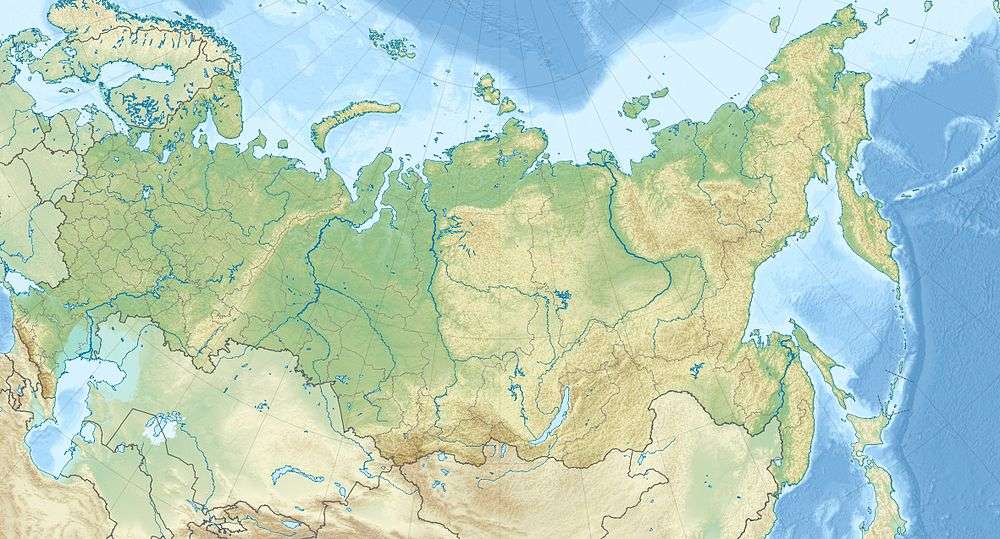Putorana Nature Reserve
| Putoransky State Nature Reserve | |
|---|---|
|
IUCN category Ia (strict nature reserve) | |
|
Frozen waterfalls | |
 | |
| Location | Russia |
| Nearest city | Norilsk |
| Coordinates | 69°2′49″N 94°9′29″E / 69.04694°N 94.15806°ECoordinates: 69°2′49″N 94°9′29″E / 69.04694°N 94.15806°E |
| Area | 18872.5 km² |
| Established | 1987 |
Putoransky State Nature Reserve is a nature reserve in the northern part of Central Siberia, located about 100 km north of the Arctic Circle in Krasnoyarsk Krai. It was established in 1987.
Location and geography
Comprising a vast area of 1,887,251 ha, the park is located in the centre of the Putorana Plateau in the northern part of Central Siberia. The part of the plateau listed on the World Heritage Site contains complete subarctic and arctic ecosystems in an isolated mountain range. The combination of remoteness, naturalness and strict protection ensures that ecological and biological processes continue with minimal human interference. It is a complex of high flat-topped mountain massifs divided by deep and wide canyons. It was created 250 million years ago by a process known as plume volcanism, in which a huge body of magma rose to the surface from 1,800 miles (2,897 kilometers) inside the Earth.[1] Next, the glaciers expanded the canyons and formed the present-day river gorges and deep narrow lakes (Lama, Keta, Glubokoye, Khantayskoye, Ayan, etc.) creating the unique appearance of the plateau. These exotic fjord-like lakes reaching 100–150 km in length and up to 400 metres (1,300 ft) deep are considered to be largest in Siberia after Baikal and Teletskoye. Another feature of the plateau are numerous waterfalls, including the 108 m high waterfall in Kanda river gorge considered to be Russia's highest. The area is also one of the richest in terms of plant diversity in the Arctic.[2]
Flora
The area consists of pristine taiga, forest tundra, tundra and arctic desert systems, as well as untouched cold-water lake and river systems. Most of the Putorana Plateau is covered by the Siberian larch taiga forests. The northern part by sparse forests and mountain tundra. There are around 400 plant species, including several rare and endemic forms.[3]
Fauna
There are 34 mammal species including one of the rarest known hoofed animals - the Putorana bighorn sheep (Ovis nivicola borealis). About 140 bird species have been noted in the reserve. Reindeer migration routes cross the reserve.[2]
References
| Wikimedia Commons has media related to Putorana Nature Reserve. |
- ↑ "Putorana Plateau". National Geographic. Retrieved 28 August 2012.
- 1 2 "Putorana Plateau". UNESCO. Retrieved 28 August 2012.
- ↑ "Putorana Plateau: The Lost World Fishing Paradise". K2 Adventures. Retrieved 28 August 2012.
